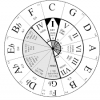Leaderboard
Popular Content
Showing content with the highest reputation on 06/25/2018 in all areas
-
I agree this would be a very useful feature. I'll go one step further and add that having some type of indicator on the compressors to show how hard you are hitting the threshold and compressing would be most useful as well.1 point
-
It's in the final stages of beta... Apart from something unforeseen, I expect it will be released this week.1 point
-
This is so tedious waiting without any indication that it will actually appear. I'm beginning to have my doubts. I'm about to bail on the HX as I really need to be able to easily edit and save my stuff via computer editing. Love the sounds of the unit, hate the manual requirement for editing. Had I known the delay would be so long when I purchased it I'd never have bought it. Talk about vaporware.1 point
-
1 point
-
lol...surely, you jest. The color of the bathroom tiles at their corporate headquarters is proprietary info.... don't hold your breath. ;)1 point
-
Hi it is just a standard guitar cable with a 1/4" jack on each end by putting the cable into the fx return you are bypassing the amps preamp and effectively using the power amp section of the amp.1 point
-
The ability to re-amp a recording long after it is recorded is the main advantage to having the software. If you record with your floor unit the take is the take and you would have to record again if you wanted to change a setting. You can do 1 take, and futz with it all you want with native until you get it just the way you want it.1 point
-
Apparently everyone missed what you said. There's no reason to send the signal to the board using the 1/4" out R output. Just send it using the XLR L/mono output to the board. You could be inviting problems if you happen to use a stereo effect. In that case you'd get one side of the stereo in your monitor and one side at the board.1 point
-
If you're talking about the HX editor there is a little clock icon to the right of the top parameter slider. Click on that and I believe it will then list notes instead of ms.1 point
-
1 point
-
On the time parameter, push the knob below it and it will switch from time in milliseconds to note selections.1 point
-
+1... This method also allows you to edit the patch for optimal tone with a different device without destroying your original copy.1 point
-
Someone else may chime in but I don't think blocks can be globally assigned. What you can do is to copy an entire setlist (or just one preset) in HX edit and then save your changes. I did this yesterday since I use 4cm for live performance but only straight in for rehearsal and it makes it very easy to call up two different scenarios.1 point
-
1 point
-
You don't have to get an XT or X3.....the cheapest path is to get a USB dongle, connected like (Variax guitar --> Variax cable or RJ-45 cable --> USB dongle --> USB cable --> computer) AND Variax --> guitar cable --> amp (to monitor your tones). https://www.sweetwater.com/store/detail/Workbench--line-6-variax-workbench?mrkgcl=28&mrkgadid=3248788736&rkg_id=0&product_id=Workbench&campaigntype=shopping&campaign=aaShopping - Core - Software & Plug-ins&adgroup=Software & Plug-ins - Plug-ins: Virtual Instruments&placement=google&adpos=1o1&creative=209288398304&device=c&matchtype=&network=g&gclid=CjwKCAjwpIjZBRBsEiwA0TN1r73qZDms_x5Q_KvZkDBMEaUzDmRnWivdbrhrw6-JYAoaEMyiWJBiyBoCrFgQAvD_BwE the $99 kit includes the sw, RJ-45 cable, USB cable, and the dongle. A used POD is more fun, though, and more reliable for the connection.1 point
-
Try this!! This is a response I got from the Youtube guy that has Spider V 240 demos that sound killer!! Here's what he said: " Thanks!! Hope this helps you ! What I do with ANY modeler I buy is start from scratch. I know many don't like to do this, but for me, this is how I learn to use the products and it stays with me. Most of the things you learn about modeling units is that how you adjust the basic amp model apply fairly consistent, even with different mfg's of modeler products. They can all sound bland until you get into the nuts and bolts of the amp and PEQ's. Guitars change the tonality too. If you have active pickups or stronger pickups, heavier tonewoods, those all can affect the final result. I gig with 4 guitars so I refined the presets I use to sound good with those guitars. Some have more output so I dial other presets up to even things out. Most of this is done by adjustments in the PEQ block or "EQ" block which I enable in everything I use. Every modeler I use, I always start with the basic model. I turn all effects off. These steps are fairly easy: 1. Set the amp model how you normally would set an amp you use IRL. Many amp models included will get gain applied differently. Classic amps often required the player to crank the gains, and all the amps eq controls. Presence control helped with hf harmonics. Use that if you want. These amps include Plexi, JTM, Bassman, JCM800's, some versions of Mark amps, Fender, and more. For example, if you want classic Plexi, just dime everything in the model. That is how the amp works better IRL, so do the same on the model. For old AcDc, Thin Lizzy, BOC, Aerosmith, etc, that's how they got that loud OD tone. You can push it with drive pedals if you want, but go to the next option to really achieve results. Great model for classic rock which gives a sweet mild overdrive with a cleaner low end for power. 2. Try different cabinet models. Most of these would be good with Green or Cream back cabs, but Vintage 30 also works if you need a brighter but darker tone with the classic style amp. I like V30 with the Sm57 @45. That's my starting point for higher gain, though I do use some variants on other presets just for subtle differences. 3. USE the PEQ to shape the tone. Boxy sound comes from Lo Mids/Mid Bass out of whack. You can fine tune that tone with the PEQ. Start with the low end. Adjust them just enough to shape the sound, then apply the gain of the EQ to each freq as needed. If you boost over 6db you will find the amp gets much louder than factory presets. There is a ton of headroom in the PEQ, but I suggest using it no more than a 3-6 db boost. The models will sound better with this EQ applied. I learned that with the Fractal and other units that sounded meh until you dialed in PEQ. PEQ is where you find the sweet spot. Don't forget, you can always go back to the Amp model and make cuts as well. If you don't know how to use PEQ it is best to test each gain and freq slider so you can hear the changes. There is no Visual Graphic and the Q is not adjustable, so my guess is it is fairly wide, so the boost or cut you make will apply broadly. That said, this block is crucial to developing the final amp sound of your preset and when used properly can make your amp model go from meh to ohhh yeah!! On other more high gain amp models, they have a different gain/vol structure. You don't have to dime them like you do classic amps. These include Mesa Rectif, Engl, Deiz, JCM900, DSL's, and so on. I find having a balance of gain and presence with a fairly high volume level on the model works best. PEQ will work closely with the model used, so what you tweak for Fender, should work with those models, Marshall, same thing. Apply the EQ of the amp model with the same PEQ and shape from the amp eq first, then fine tune the PEQ. Using different cabinets will change things, but those differences are desirable imo. IOW, just a cab model and mic position change can get a thicker, darker, or brighter tone. Experiment with what works. The Spider V is fairly linear in it's power. You can adjust your presets at just less than stage levels and they will be good at higher gig levels. Just don't adjust them with Headphones or really low levels. They will not translate as well. That is not the amp though, that is just how human hearing is. Like any amp you tweak, give your ears a rest after a while. If you tweak over long periods, the next day things may sound very different. Factory presets for any modeler are hit or miss. That is to be expected. I use them as reference more than anything else. 4. Once you get the basic amp tone you like, now you can apply other things like drives, compressors, and other effects. Key is, don't over do it. Compressors can actually tame game but warm it up if used that way, or they can be a nice boost. You decide. Some of my presets used are boosts, and some act almost as a limiter but they tighten the gain. These usually have a lower threshold on high gain amp models. 5. Drives can really impact the gain, but on high gain amps, don't use the gain too high because more distortion will thin the tone badly and it won't cut a mix. Some drives have EQ. Be cautious here because the EQ on the Drive block can certainly impact the amp model. These are really good for Clean EQ boosts. Set for minimal gain, but boost the eq controls to provide the clean boost for lead cutting. Use sparingly for best results. 6. Other FX, mods delays rev. These I use as needed. Most of the time I have fx applied the mix levels are rather low unless I am going for something that requires a heavy or more wetness to the effect. Just know a wetter effect can change the preset levels too. In a Stereo 240, it will broaden the tones quite a bit. In my experiences with so many modelers, the only way to see what is under the hood is to look, compare and tweak. Starting from scratch as you would when you build a rig is the best way to learn the rig from top to bottom. I know many think the mfg's should have these models all worked out for us, but the fact is everyone's ears are different. There is no way or even a halfway point or mfg's to structure a preset that everyone will like. When you have an amp modeler, you are essentially walking into a room with all those tools. Now you get to put them together. When I bought the Spider V I went in with basics and applied those ideas to the unit. As I was at the store over a busy Holiday weekend of shopping, people that tried the amp just by factory models were stunned at the sounds I was getting after a few PEQ tweaks. I had never heard the word "dude" so much than that afternoon. I picked up the Spider V 240 that afternoon and ordered the G10T and FBV3. Out of the other products that were there including Boss, Blackstar, and Fender, I chose this one since it had everything needed for gigging. The other combos didn't handle low tuning guitars either. Difference being Spider V 240 and others in the series are modeling amps. Other choices were variables of a single preamp type. Works for a simple one tone couple gain option players, but not at all as diverse as I needed. The wireless, FBV3 option sealed it for me too. Hope that helps to clarify what I do. I have some presets up on L6 site, there is no order to them. Just look for ones that start with MB> "1 point
This leaderboard is set to Indiana - Indianapolis/GMT-05:00




